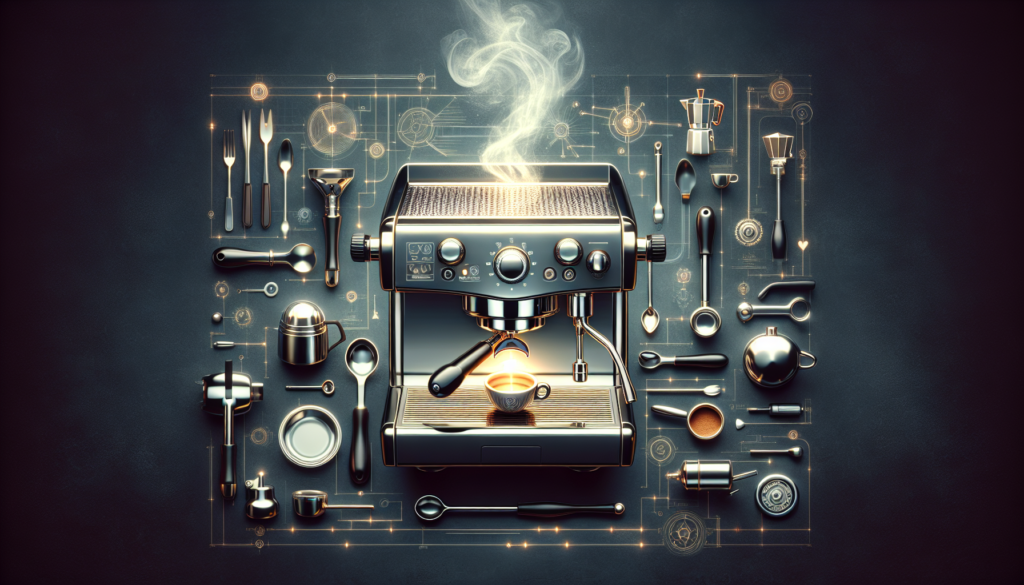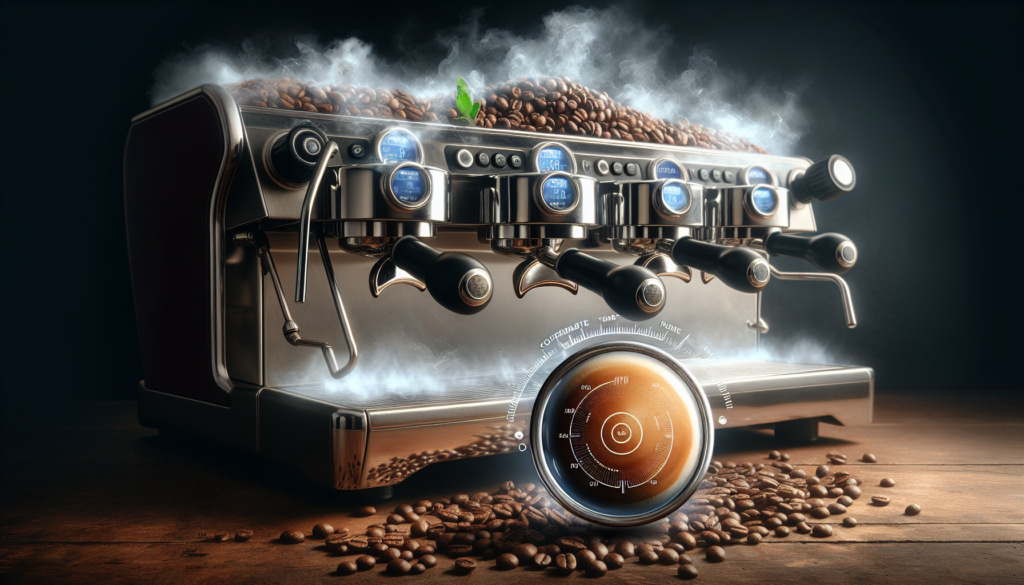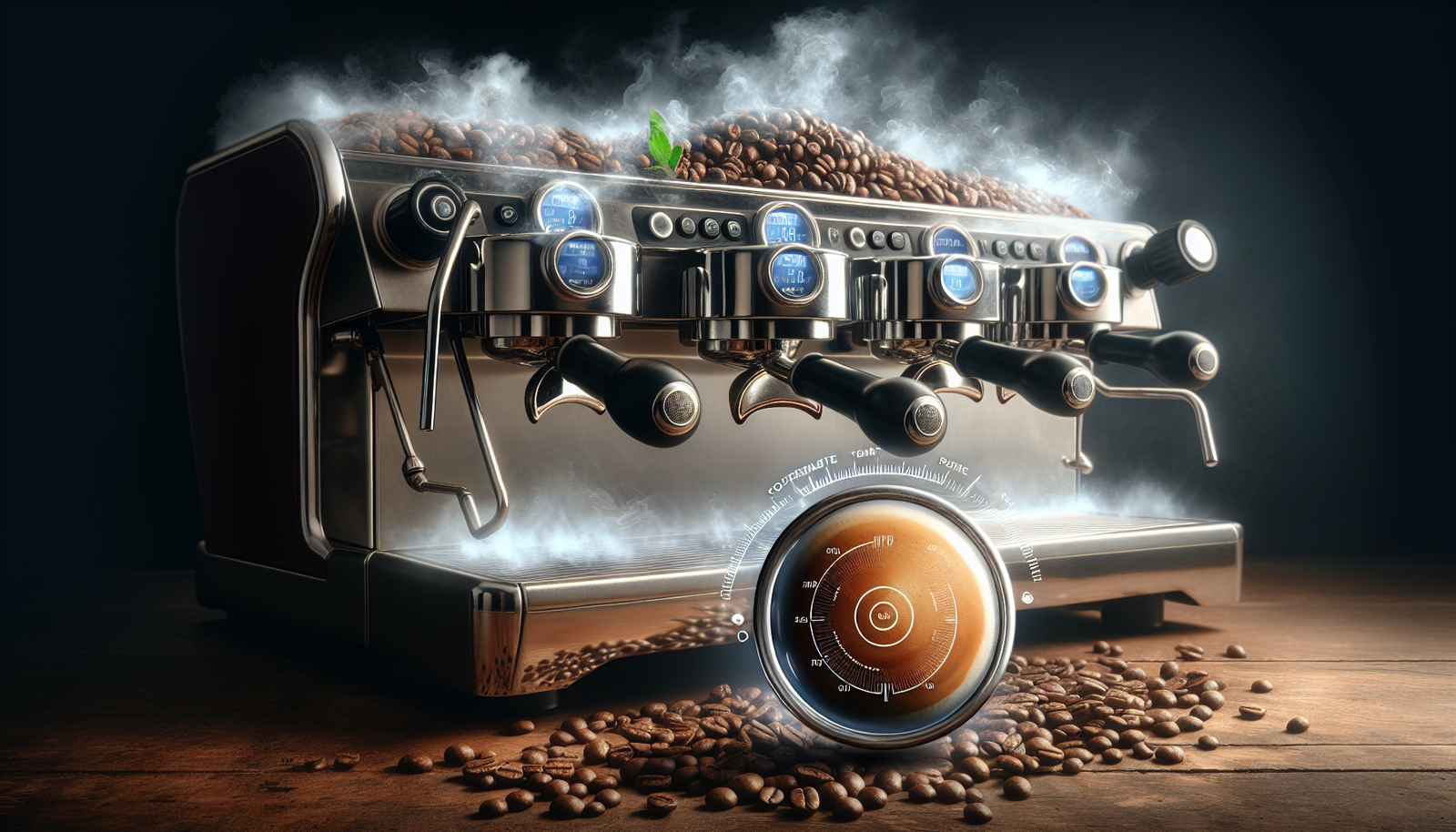Have you ever wondered what temperature is ideal for brewing the perfect cup of espresso? Look no further! In this article, we will explore the importance of finding the right temperature for brewing espresso and how it can greatly influence the taste and quality of your coffee. From understanding the science behind the brewing process to discovering the optimal temperature range, you’ll gain valuable insights to elevate your espresso experience. So, grab your favorite mug and get ready to savor the delicious flavors that arise when the perfect brewing temperature is achieved!

Factors that Affect Espresso Brewing Temperature
Coffee Beans
The type and quality of coffee beans have a significant impact on the optimal brewing temperature for espresso. Different coffee beans have different densities, moisture content, and chemical compositions that require specific temperature ranges to extract flavors effectively.
Grinding
The level of grind fineness directly affects the extraction process and, consequently, the brewing temperature. Finer grinds require lower brewing temperatures to prevent over-extraction, while coarser grinds demand higher temperatures to ensure proper extraction.
Water
Water temperature plays a crucial role in extracting flavors from the coffee grounds. The ideal water temperature for espresso brewing should be around 195-205°F (90-96°C). Water that is too cold may result in under-extraction, while excessively hot water could lead to over-extraction.
Portafilter
The material, size, and design of the portafilter can influence temperature stability during brewing. Certain materials, such as stainless steel, retain heat better than others, ensuring a more consistent temperature during the extraction process. The size and design of the portafilter may also affect heat retention and distribution.
The Importance of Temperature in Espresso Brewing
Extraction
Temperature greatly affects the extraction process in espresso brewing. The optimal temperature range allows for the efficient extraction of desirable compounds, such as oils, sugars, and acids, while avoiding the extraction of unwanted flavors. This balance ensures a well-rounded and flavorful espresso shot.
Taste
The brewing temperature impacts the taste profile of the espresso. Different compounds within the coffee dissolve at varying temperatures, affecting the acidity, sweetness, and bitterness of the final brew. Achieving the ideal temperature provides a balanced and enjoyable taste experience.
Crema
Temperature also influences the formation and quality of the crema, the creamy layer that sits atop a well-prepared espresso shot. The proper temperature promotes the emulsification of oils in the coffee, resulting in a rich and velvety crema with enticing aromas.
Consistency
Maintaining a consistent brewing temperature is crucial to ensure consistent flavor and quality in every shot of espresso. Fluctuating temperatures can lead to variations in extraction, resulting in inconsistent taste profiles and potentially disappointing cups of espresso.
Optimal Espresso Brewing Temperature Range
Recommended Temperature
The ideal brewing temperature for espresso falls within the range of 195-205°F (90-96°C). This temperature range allows for optimal extraction and the preservation of desired flavors while minimizing the extraction of negative compounds.
Temperature Tolerance
Espresso machines typically have built-in temperature controls to maintain a stable brewing temperature. The tolerance range for espresso machines is usually within ±2°F (±1°C) to ensure consistency.
Temperature Testing
It is important to regularly test and calibrate the brewing temperature of espresso machines. This can be done using a thermometer or temperature strips specifically designed for espresso brewing. Regular testing helps identify any inconsistencies or deviations in temperature and allows for adjustments to maintain optimal brewing conditions.
Effects of Brewing at Incorrect Temperatures
Under-extraction
Brewing at temperatures below the recommended range can lead to under-extraction. This results in a thin and weak-tasting espresso with a lack of body and flavor complexity.
Over-extraction
On the other hand, brewing at excessively high temperatures can cause over-extraction. Over-extracted espresso can taste bitter and unpleasant, with an overpowering and harsh flavor profile.
Bitterness
Brewing at higher temperatures can extract more bitter compounds from the coffee grounds, resulting in a more bitter-tasting espresso. It is essential to find the optimal temperature to strike a balance between flavor extraction and minimizing bitterness.
Sourness
Brewing at lower temperatures can create an under-extracted espresso that tastes sour or acidic. Finding the right temperature range is crucial to avoid the unpleasant sourness and achieve a well-balanced cup.

Different Approaches to Espresso Brewing Temperature
Classic Approach
The classic approach to espresso brewing involves using a higher temperature range, typically around 200°F (93°C). This approach focuses on extracting a full-bodied, robust, and more traditional espresso flavor.
Modern Approach
The modern approach to espresso brewing involves using a slightly lower temperature range, usually around 195°F (90°C). This approach aims to highlight the nuanced flavors of specialty coffee, allowing for a more delicate and complex taste profile.
Temperature Profiling
Temperature profiling is a technique used by experienced baristas to adjust the brewing temperature at different stages of the extraction process. By manipulating the temperature, baristas can accentuate specific flavors or compensate for variations in coffee beans, ensuring a customized and optimized taste experience.
The Role of Preheating Equipment
Preheating the Portafilter
Preheating the portafilter helps maintain a stable brewing temperature by preventing heat loss during the extraction process. A cold portafilter can quickly cool down the coffee grounds and result in temperature fluctuations, affecting the overall extraction quality.
Preheating the Cup
Preheating the cup is important to ensure that the brewed espresso maintains its temperature when it is served. A cold cup can quickly absorb heat from the espresso, leading to a prematurely cooled and less enjoyable drinking experience.
Preheating the Brewing Equipment
Preheating the entire espresso machine and brewing equipment, including the group head, can help achieve a consistent brewing temperature. This process minimizes heat loss during the extraction process and ensures that the temperature remains stable throughout the brewing cycle.
Adjusting Temperature for Different Coffee Roasts
Light Roast
Lighter roasted coffee beans tend to be more acidic and delicate in flavor. To bring out the nuances of these beans, a slightly lower brewing temperature, around 195°F (90°C), is recommended. This lower temperature allows for a more nuanced extraction, preserving the bright acidity and subtle flavors characteristic of light roasts.
Medium Roast
Medium roasted coffee beans strike a balance between acidity and body. Brewing at the recommended temperature range of 195-205°F (90-96°C) allows for an extraction that showcases the medium roast’s balanced flavors, including a pleasant acidity and moderate sweetness.
Dark Roast
Dark roasted coffee beans are known for their bold and rich flavor profiles, often exhibiting lower acidity levels. A slightly higher brewing temperature, around 200°F (93°C), can help extract the desirable flavors and oils from these beans, resulting in a full-bodied and robust espresso.
Inconsistent Temperature Issues and Solutions
Fluctuating Temperature
Inconsistent brewing temperatures can occur due to various factors, such as fluctuating power supply or inadequate temperature regulation in the espresso machine. To address this issue, it is crucial to ensure that the espresso machine is properly calibrated, regularly serviced, and the heating elements are functioning optimally.
Temperature Stability Solutions
Using a PID (Proportional Integral Derivative) controller in an espresso machine can help maintain stable and precise brewing temperatures. PID controllers constantly monitor and adjust the temperature, providing greater control and stability during the brewing process.
Temperature Control in Home Espresso Machines
Single Boiler
Single boiler espresso machines have a single heating element used for both brewing and steaming. These machines often require a cooling flush to adjust the temperature between brewing and steaming. Careful attention should be given to temperature management and adjusting the timing of the cooling flush to avoid temperature inconsistencies.
Dual Boiler
Dual boiler espresso machines have separate boilers for brewing and steaming, ensuring more precise temperature control. The dedicated brew boiler allows for stable and consistent brewing temperatures, without the need for cooling flushes.
Heat Exchanger
Heat exchanger machines have a single boiler that heats water for brewing and steam simultaneously. These machines utilize a heat exchanger to maintain different temperature levels for brewing and steaming. Proper temperature management and understanding of the machine’s heat exchanger design are essential for achieving consistent results.
Conclusion
Temperature is a critical factor in achieving the perfect espresso shot. The optimal brewing temperature range ensures proper extraction, balanced flavors, and the formation of a rich and velvety crema. Factors such as coffee beans, grinding, water, and the portafilter all play a role in temperature management. Understanding the effects of brewing at incorrect temperatures, exploring different brewing approaches, and preheating equipment can enhance the quality of your espresso. By adjusting the brewing temperature for different coffee roasts and addressing inconsistent temperature issues, you can create a consistent and enjoyable espresso experience. Whether using a home espresso machine or experimenting with temperature profiling, maintaining precise temperature control is key to crafting a delicious cup of espresso.

